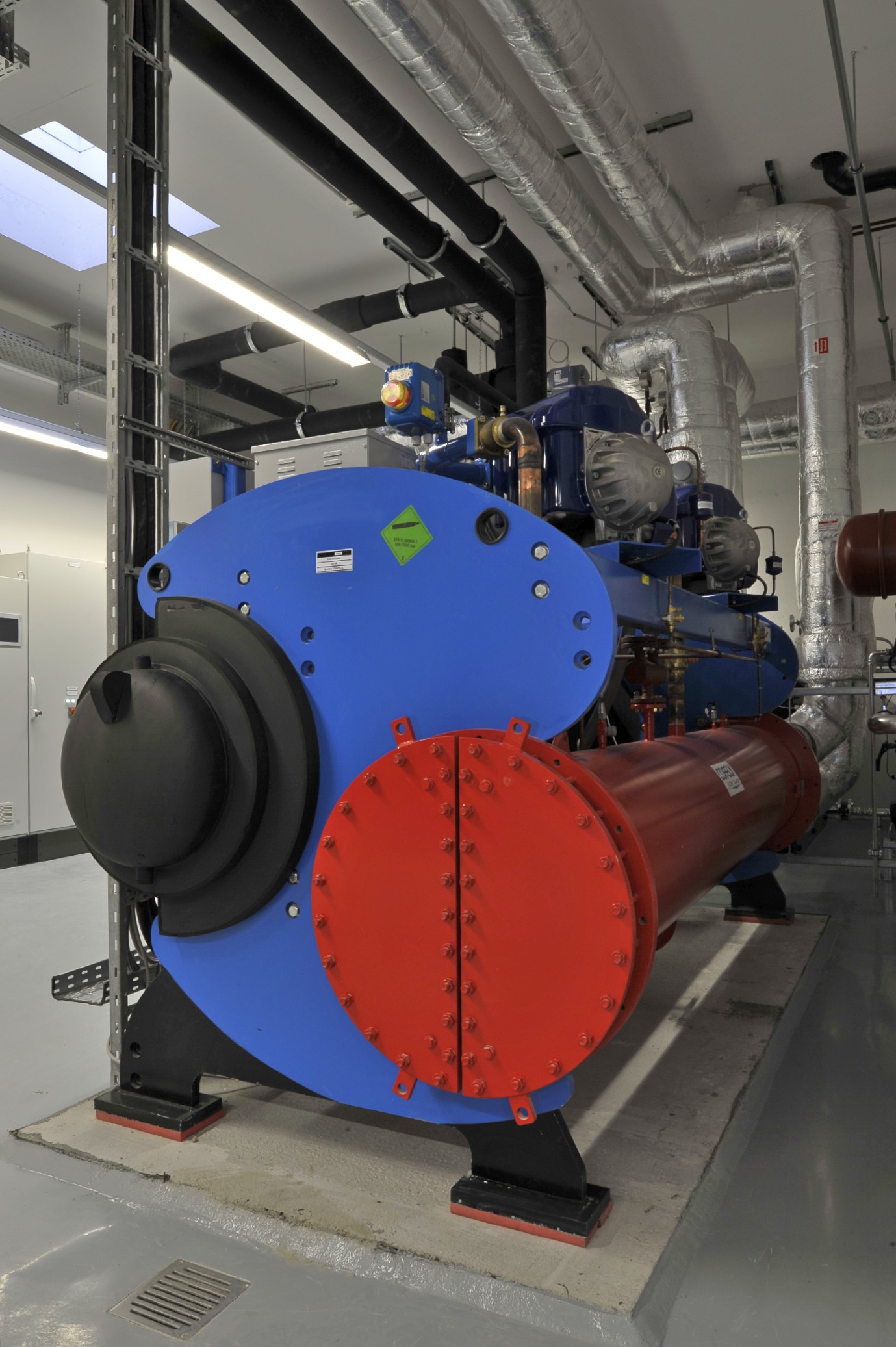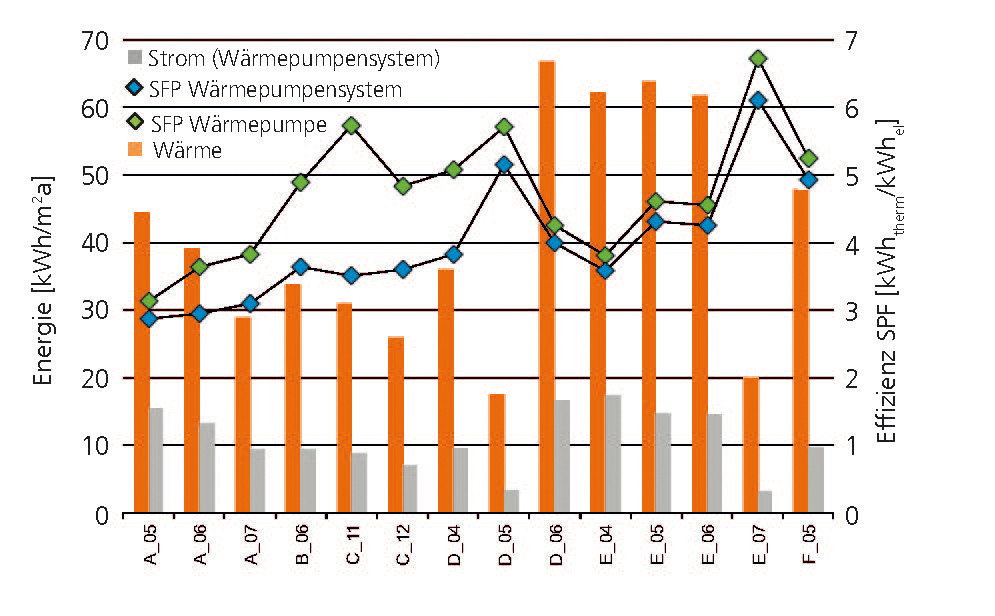| Duration: | July 2012 - June 2016 |
| Contracting Authority/ Sponsors: | German Federal Ministry for Economic Affairs and Energy (BMWi) |
| Project Partners: | Fraunhofer-Institute for Buliding Physics IBP, Kassel; RWTH Aachen, E.ON Energy Research Center, Chair for Energy Efficient Buildings and Indoor Climate |
| Website: | www.netzreaktivegebaeude.de |
Interaction Between Buildings and the Electricity Grid


Analyses of the composition of a future, complete German energy system that is designed to achieve minimal total costs show that electric heat pumps will play a central role in supplying heat (page 127). In particular, heat pumps in the higher power range for office and light industrial buildings offer great potential to shift loads by efficient generation and intermediate storage of heat and cooling energy by coordinated interaction with the grid, thus contributing to grid stability. On the basis of measurement campaigns over several years, we are analysing the energy and efficiency performance of large heat pump systems in the thermal power range from 40 to 150 kWtherm.
Low-energy buildings with a reduced power and energy demand for heating and cooling allow efficient application of natural ambient heat sources and sinks in combination with heat pumps. In winter, the naturally existing temperature level of the ambient energy is slightly raised by a heat pump, also an economically favourable option. In summer, the earth or groundwater is used directly as a natural ambient heat sink for free cooling of the building. If the building and its usage require more cooling power, air-conditioning can be provided energy-efficiently by a reversible heat pump.
For the heat pump systems in the investigated buildings (heat pump with a compressor and primary pump), seasonal performance factors (SPF) of 3 to 6.1 kWhtherm/kWhel (earth) and 3.0 kWhtherm/kWhel (ground water) were achieved. Both the primary pump and also the inlet temperature of the secondary transfer system have a decisive influence on the efficiency and seasonal performance factors of the heat pump. The usage of ground-coupled, reversible heat pumps to provide cooling energy represents an efficient and sustainable concept for cooling buildings. Here also, the relatively high inlet temperatures for cooling of 16 to 20 °C lead to high energy efficiency. Based on the monitored data, seasonal performance factors of 4.8 to 5.8 kWhtherm/kWhel were demonstrated in projects.